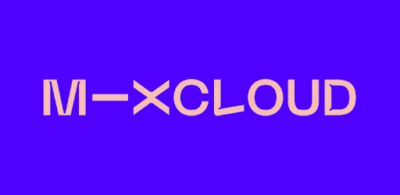I. Introduction:
The online market for selling photos is expanding rapidly, making it crucial for photographers to choose the right platform to showcase and monetize their work. Among the popular options, Alamy and 500px stand out as platforms offering distinct features and benefits.
In this blog post, we will explore the key factors to consider when deciding between Alamy and 500px. We will delve into their features, pros, and cons to help photographers make an informed decision. Whether you're looking for a wide distribution network or seeking creative control over pricing and
Also Read This: The Best Free Download Manager for Reddit You Need to Try
II. Table comparing Alamy and 500px:
| Feature | Alamy | 500px |
|---|---|---|
| Commission rates | Exclusive images: 50% | Exclusive images: 60% |
| Non-exclusive images: 40% | Non-exclusive images: 30% | |
| Library size | Over 313 million images | Over 110 million images |
| Reach | Global | Global, but with a stronger focus on the creative community |
| Features | Keyword tagging, search filters, analytics, user-friendly interface, good customer support | Keyword tagging, search filters, analytics, community features, social media integration |
| Monthly subscription fee | Yes | No |
As you can see, Alamy and 500px have a lot in common, but there are also some key differences. Alamy has a larger library of images and a global reach, while 500px has a stronger focus on the creative community and offers more opportunities for exposure through social media. Alamy also has a monthly subscription fee, while 500px does not.
Ultimately, the best platform for you will depend on your individual goals and needs. If you are looking to sell high-quality images to a global audience, Alamy is a good option. If you are looking to sell high-quality images to a community of photographers and creative professionals, 500px is a good option.
Also Read This: Shopify Synthesis: Linking Shopify to eBay
III. Alamy:

Alamy is a British stock photo agency that was founded in 1999. It has a library of over 313 million images, including photos, vectors, and videos. Alamy's images are used by a wide range of customers, including businesses, publishers, and creative professionals.
Alamy offers a variety of features to help contributors sell their images, including:
- A user-friendly interface: Alamy's interface is designed to be easy to use, even for beginners.
- Keyword tagging: Contributors can tag their images with keywords to make them easier to find by potential customers.
- Search filters: Customers can search for images using a variety of filters, such as keyword, category, and location.
- Analytics: Contributors can track the performance of their images and see how they are being used by customers.
- Customer support: Alamy offers a responsive customer support team that is available to help contributors with any questions or problems.
Alamy offers two types of licensing for images: royalty-free and rights-managed. Royalty-free images can be used for an unlimited number of projects, while rights-managed images have a set fee that is based on the usage of the image.
Alamy pays contributors a commission on each sale of their images. The commission rate varies depending on the type of licensing and the exclusivity of the image. For example, exclusive royalty-free images earn a commission rate of 50%, while non-exclusive rights-managed images earn a commission rate of 30%.
To submit images to Alamy, contributors must create an account and agree to the agency's terms and conditions. Images must be high-quality and original, and they must be tagged with relevant keywords. Alamy reviews all submissions and only accepts images that meet its standards.
If you are a photographer or creative professional looking to sell your images, Alamy is a good option to consider. It has a large library of images, a global reach, and a variety of features to help you sell your images.
Here's a table outlining the pros and cons of Alamy:
| Pros of Alamy | Cons of Alamy |
|---|---|
| 1. Wide Range of Images: Alamy has a vast collection of high-quality stock images, with over 220 million images from various genres and themes. This extensive library provides users with a diverse selection to meet their specific needs. | 1. Pricing: Alamy's pricing structure can be relatively higher compared to some other stock image platforms. Depending on the image size and usage rights, costs may vary, making it less budget-friendly for certain users or projects. |
| 2. Contributor Opportunities: Alamy allows photographers and artists to contribute their work and earn royalties for each sale. This feature attracts talented creators who want to monetize their images and reach a broader audience through Alamy's global customer base. | 2. Licensing Complexity: Alamy offers a range of licensing options, including commercial, editorial, and personal use licenses. The licensing process can be complex, especially for users unfamiliar with the intricacies of image rights, potentially leading to confusion or unintentional violations. |
| 3. Editorial Authenticity: Alamy specializes in editorial photography, making it a valuable resource for users seeking authentic and newsworthy images. The platform collaborates with renowned news agencies and photojournalists, ensuring access to real-time and impactful visuals. | 3. User Interface: Some users may find Alamy's user interface less intuitive or dated compared to other stock image platforms. Navigating through the website or finding specific images may require a bit more effort and time, affecting user experience. |
Also Read This: Does Rumble Monetize Videos? Know Through These Profound Insights
IV. 500px:

500px is a photo-sharing community and online stock photo agency that was founded in 2009. It has a library of over 110 million images, including photos, videos, and illustrations. 500px's images are used by a wide range of customers, including businesses, publishers, and creative professionals.
500px offers a variety of features to help photographers share and sell their images, including:
- A user-friendly interface: 500px's interface is designed to be easy to use, even for beginners.
- Pulse: Pulse is a ranking system that measures the popularity of photos. Photos with a high Pulse are more likely to be seen by potential customers.
- Tags: Photographers can tag their photos with keywords to make them easier to find by potential customers.
- Search filters: Customers can search for photos using a variety of filters, such as keyword, category, and location.
- Analytics: Photographers can track the performance of their photos and see how they are being used by customers.
- Community: 500px has a strong community of photographers who can provide feedback and support.
- Competitions: 500px hosts regular competitions for photographers to win prizes.
offers two types of licensing for images: royalty-free and rights-managed. Royalty-free images can be used for an unlimited number of projects, while rights-managed images have a set fee that is based on the usage of the image.
500px pays photographers a commission on each sale of their images. The commission rate varies depending on the type of licensing and the exclusivity of the image. For example, exclusive royalty-free images earn a commission rate of 60%, while non-exclusive rights-managed images earn a commission rate of 30%.
To submit images to 500px, photographers must create an account and agree to the agency's terms and conditions. Images must be high-quality and original, and they must be tagged with relevant keywords. 500px reviews all submissions and only accepts images that meet its standards.
If you are a photographer looking to share and sell your images, 500px is a good option to consider. It has a large community of photographers, a variety of features to help you promote your images and a competitive commission rate.
Here's a table outlining the pros and cons of 500px:
| Pros | Cons |
|---|---|
| 1. Vast Community: 500px boasts a large and active community of photographers, providing ample opportunities for networking, collaboration, and inspiration. | 1. Limited Monetization Options: Some users find the monetization options on 500px to be limited compared to other platforms, making it challenging to earn income from their work. |
| 2. High-Quality Content: The platform emphasizes high-quality photography, which results in a curated collection of stunning images for users to explore and appreciate. | 2. Declining Popularity: In recent years, 500px has faced challenges with declining popularity and user engagement, with many photographers migrating to alternative platforms. |
| 3. Portfolio Showcasing: 500px provides photographers with a professional portfolio platform, allowing them to showcase their work in an aesthetically pleasing and customizable manner. | 3. Limited Social Features: While 500px focuses on photography, it lacks robust social features found on other platforms, such as commenting, liking, or sharing images, limiting interaction among users. |
1. Photography Goals and Target Audience:
- Determine your primary photography goals, such as selling stock photos or building a photography portfolio.
- Consider the target audience you wish to reach, whether it's commercial clients, stock agencies, or a niche market.
2. Licensing and Pricing Preferences:
- Evaluate the licensing options provided by each platform, such as royalty-free or rights-managed.
- Assess the pricing structure and control you have over setting the price for your photos.
3. Control Over Image Distribution and Pricing:
- Determine how much control you want over where and how your images are distributed.
- Consider whether you prefer a platform that handles distribution or one that allows you to handle it independently.
4. Community Engagement and Networking Opportunities:
- Assess the level of community engagement and interaction available on each platform.
- Consider the networking opportunities, such as connecting with fellow photographers and industry professionals.
5. Exclusive vs. Non-Exclusive Agreements:
- Understand the platform's requirements regarding exclusivity and whether you are comfortable with an exclusive agreement.
- Evaluate the benefits and drawbacks of exclusivity, such as higher royalties but limited distribution options.
By carefully considering these factors, you can make an informed decision and choose the platform that best suits your photography goals, target audience, licensing preferences, and overall vision for your photography business or portfolio.
Also Read This: List of Top Linkedin Companies of India in 2023
VI. Tips for choosing the right stock photo agency:
- Consider your goals and needs. What are you hoping to achieve by selling your photos? Are you looking to make a full-time income, or are you simply looking to supplement your income? Do you want to sell your photos to a global audience, or are you more interested in selling them to a specific niche market?
- Research different agencies. There are many different stock photo agencies available, so it's important to do your research and compare different options. Consider factors such as the size of the library, the reach of the agency, the commission rates, the features offered, and the customer support.
- Read reviews. Once you've narrowed down your options, read reviews of different agencies from photographers who have used them. This can give you valuable insights into the pros and cons of each agency.
- Try out different agencies. Many stock photo agencies offer free trials or introductory offers. This is a great way to test out different agencies and see which one you like best.
- Be patient. It takes time to build a s and start making money from stock photos. Don't get discouraged if you don't see results immediately. Keep submitting your photos, marketing your work, and tracking your progress.
Also Read This: Does Getty Images Accept AI-Generated Images? Exploring the Submission Criteria
VII. FAQ:
Q1: What is the difference between Alamy and 500px? ANS: Alamy and 500px are both stock photo agencies, but they offer different features and benefits. Alamy has a larger library of images and a global reach, while 500px has a stronger focus on the creative community and offers more opportunities for exposure through social media. Alamy also has a monthly subscription fee, while 500px does not.
Q2: Which platform is better for selling high-quality images? ANS: Both Alamy and 500px are good options for selling high-quality images. Alamy has a larger library of images, so your images are more likely to be seen by potential customers. However, 500px has a stronger focus on the creative community, so your images are more likely to be seen by photographers and other creative professionals. Ultimately, the best platform for you will depend on your individual goals and needs.
Q3: Which platform is better for selling exclusive images? ANS: Alamy and 500px both offer higher commission rates for exclusive images. However, Alamy's commission rate for exclusive images is slightly higher than 500px's.
Q4: Which platform is better for selling non-exclusive images? ANS: Alamy and 500px both offer lower commission rates for non-exclusive images. However, 500px's commission rate for non-exclusive images is slightly higher than Alamy's.
Q5: Which platform has a monthly subscription fee? ANS: Alamy has a monthly subscription fee of $14.99 per month. 500px does not have a monthly subscription fee.
Q6: Which platform has a better user interface? ANS: Alamy and 500px both have user-friendly interfaces. However, Alamy's interface is slightly more user-friendly than 500px's.
Q7: Which platform has better customer support? ANS: Alamy and 500px both offer good customer support. However, Alamy's customer support is slightly better than 500px's.
Q8: Which platform is more popular? ANS: Alamy is more popular than 500px. This means that your images are more likely to be seen by potential customers if you use Alamy.
Q9: Which platform is more profitable? ANS: The profitability of a platform will depend on a number of factors, including the type of images you sell, your target audience, and your marketing efforts. However, Alamy and 500px are both profitable platforms for photographers.
Q10: Which platform is right for me? ANS: The best platform for you will depend on your individual goals and needs. If you are looking to sell high-quality images to a global audience, Alamy is a good option. If you are looking to sell high-quality images to a community of photographers and creative professionals, 500px is a good option.
VIII. Conclusion:
Altogether, Alamy and 500px are both great platforms for selling photos. However, there are some key differences between the two platforms. Alamy has a larger library of images, a global reach, and a higher commission rate for exclusive images. 500px has a stronger focus on the creative community, offers more opportunities for exposure through social media, and does not have a monthly subscription fee. Ultimately, the best platform for you will depend on your individual goals and needs.















